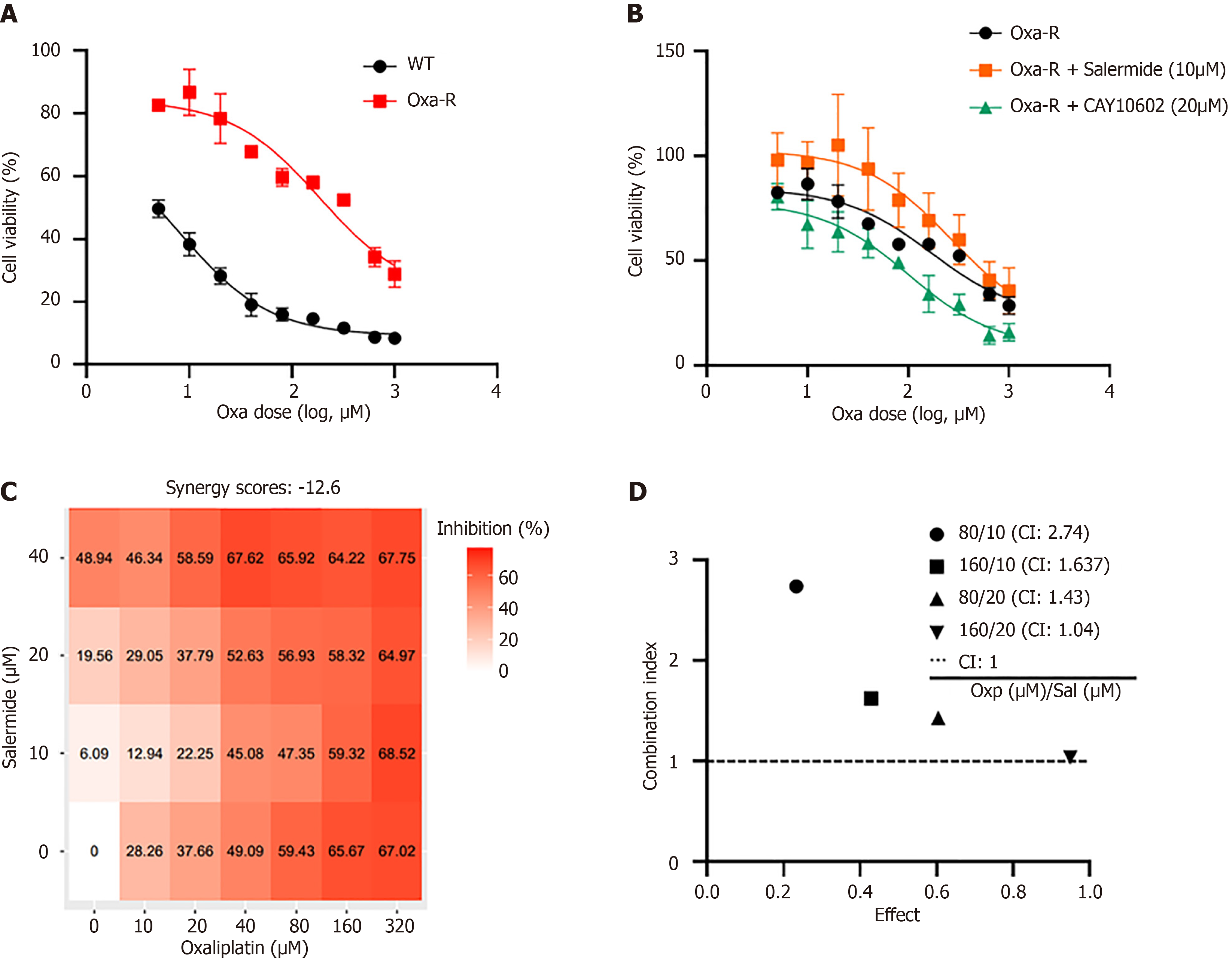Copyright
©The Author(s) 2025.
World J Gastroenterol. Mar 21, 2025; 31(11): 100785
Published online Mar 21, 2025. doi: 10.3748/wjg.v31.i11.100785
Published online Mar 21, 2025. doi: 10.3748/wjg.v31.i11.100785
Figure 3 SIRT1 expression regulates the sensitivity of HCT116 Oxa-R cells to oxaliplatin.
A: MTS assay was performed to determine the IC50 of oxaliplatin in HCT116-WT and HCT116 Oxa-R cells; B: HCT116 Oxa-R cells were treated with salermide (10 μM) to inhibit SIRT1 expression or CAY10602 (20 μM) to increase SIRT1 expression. Cell survival curves revealed that inhibition of SIRT1 increased the IC50 of oxaliplatin in HCT116 Oxa-R cells, whereas an increase in SIRT1 expression decreased the IC50; C: SynergyFinder software was used to calculate the synergy score for the combination of oxaliplatin and salermide in HCT116 Oxa-R cells (a score > 10 indicates synergy, -10 to 10 indicates additive effects, and < -10 indicates antagonism); D: Compusyn software was used to evaluate the combination index (CI) for oxaliplatin and salermide in HCT116 Oxa-R cells (CI < 1 indicates synergy, CI > 1 indicates antagonism, and CI = 1 indicates additive effects). CI: Combination index.
- Citation: Niu YR, Xiang MD, Yang WW, Fang YT, Qian HL, Sun YK. NAD+/SIRT1 pathway regulates glycolysis to promote oxaliplatin resistance in colorectal cancer. World J Gastroenterol 2025; 31(11): 100785
- URL: https://www.wjgnet.com/1007-9327/full/v31/i11/100785.htm
- DOI: https://dx.doi.org/10.3748/wjg.v31.i11.100785









